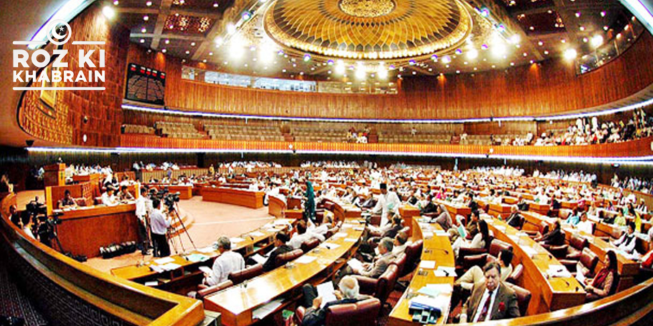ISLAMABAD:
Pakistan’s per capita debt surged by double digits, reaching nearly Rs302,000 by the end of the last fiscal year. The government also failed to curb the budget deficit to the legally prescribed limit, according to the new Fiscal Policy Statement released on Tuesday.
The budget deficit for the last fiscal year surpassed the legal limit by more than double, amounting to Rs4 trillion, as shown in the Fiscal Policy Statement for 2025. While the law mandates that the federal budget deficit should not exceed 3.5% of the gross domestic product (GDP), it soared to 7.3% of GDP, or Rs7.7 trillion, slightly exceeding the budget target.
The Fiscal Policy Statement, submitted to the National Assembly by the finance ministry, revealed that per capita debt rose from Rs271,264 in FY 2023 to Rs301,954 in FY 2024, an increase of Rs30,690 or 11.3%.
Under the Fiscal Responsibility and Debt Limitation Act of 2005, the government is required to submit a fiscal policy statement by the end of January each year, explaining any violation of the fiscal responsibility targets. Both the finance minister and finance secretary certified the accuracy of the analysis and figures based on data available until January 7th.
The statement is part of fulfilling Section 6 of the Fiscal Responsibility and Debt Limitation Act, which mandates the presentation of a fiscal policy statement before the National Assembly each January.
The report acknowledged that the federal government had violated fiscal management principles by exceeding the legal limit for the budget deficit. When the finance minister presented the budget in June 2023, the deficit target set at 7.1% of GDP violated the law.
The government admitted in the National Assembly that it did not adhere to the legal limit of 3.5% of GDP for the federal budget deficit in FY 2024.
The Fiscal Responsibility and Debt Limitation Act, Section 3(a), states that the federal fiscal deficit, excluding foreign grants, should be capped at 4% of GDP from FY 2017-18 for three years, and thereafter, at a maximum of 3.5% of GDP.
The total federal budget deficit reached Rs7.7 trillion, or 7.3% of GDP, Rs4 trillion or 3.8% higher than the legal limit, according to the report.
The total public debt rose by nearly 15% in the last fiscal year, increasing from Rs62.9 trillion to Rs72.3 trillion due to higher interest payments and the depreciation of the exchange rate. However, in terms of the economy’s size, the public debt-to-GDP ratio decreased from 74.8% in June 2023 to 67.2% in June 2024.
The report also noted that government expenditures exceeded budget estimates due to a rise in interest payments, which were 11.7% higher than expected. However, non-interest expenditures remained within budget limits.
Inflation declined in the last fiscal year, and there was a surplus in the primary fiscal balance, a negligible current account deficit, and a stable exchange rate. The report credited the fiscal consolidation and targeted subsidies as key factors in the economy’s recovery.
Nevertheless, current expenditures reached 105.5% of budget estimates, mainly driven by increased mark-up payments due to high interest rates, according to the report.
The report revealed that while the budget for FY 2024 estimated development expenditures at Rs1.14 trillion, actual spending was reduced to Rs1.03 trillion following a Rs218 billion cut to the PSDP.
Finally, the finance ministry noted a slight shortfall in total revenues, contributing to the actual federal fiscal deficit of 7.3% of GDP, higher than the target of 7.1%.




